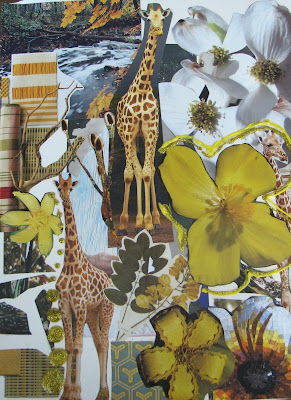

I had hoped to blog regularly during my research trip to Europe, but have run into technical difficulties [update since writing this and case in point: I’ve spent the last two hours trying to make this work…subsequent posts may have to wait for my return]. Network and computer problems have plagued me—plus a non-stop schedule—but my trusty phone lets me post on Twitter almost constantly, so you can look for me there (leboland). I started the day with the major Kandinsky exhibition at the Pompidou, giving a tweet-by-tweet of thoughts that have been much on my mind lately anyway. Since it would be a ridiculously long blog entry to describe the whole day, much less all of the last two weeks at once, I’ll still present my thoughts in installments. I’ll return to the start of the trip later, I promise, giving at least a highlights reel. For now, however, I have to write about the show that actually got me the most excited (which is really saying something, because I saw some ridiculously good exhibitions today).
"Elles@centrepompidou” is truly spectacular. All women artists from their permanent collection, and perhaps the most powerful exhibition I’ve ever seen. Period. No gender qualification necessary. In the past I’ve been hesitant about such affirmative action type shows. I felt it probably better to simply show a fair representation of work by artists of both genders. However, my wife, who until recently worked as gallery director for a not-for-profit gallery in Austin that shows only contemporary, Texas women artists—Women & their Work—showed me the statistics and the need for some sort of corrective became clear to me. This has also been a hot topic of late on NYC critic, Jerry Saltz’s Facebook page (and many other blogs re-posting and commenting on it) with regard to MOMA’s fourth and fifth floors, as I’m sure many of you are aware.
At any rate, “elles” stands firmly on its own two feet, with some of the strongest, smartest work I’ve seen. It was also really well organized thematically. I’ll admit with some shame that I was only familiar with about half of the artists before seeing the show, but I bought the catalogue (something I never do when traveling) to make sure I don’t forget those I learned of today. Some I did know. Louise Bourgeois seemed over represented to me, but the Rachel Whiteread--a perennial favorite of mine--made up for that in pure spatial volume and mass, if nothing else. Entering the exhibition, I was confronted with Agnès Thurnauer (who I didn’t know),
Six Portrait Grandeur Nature, 2007-09, which is witty, direct, and completely brilliant. It’s the one picture (well, two from different angles) I got before my camera died, so you can see it for yourself above. Here’s the artist's statement that accompanied it:
The idea for this sort of work came to me when people found it impossible to grasp the question I asked them: why is the history of art and ideas almost exclusively about men? In the absence of any representation of this question, I thought the simplest thing would be to find a visual form for it. . . . So I decided to create a form opposed to the existing form, to invent a complementary art history, reversing the gender of all the best known artists from male to female, and much more rarely, from female to male. There thus appeared a new artistic population, which in being just as monolithic as the history from which it was derived, succeeded in raising the question I was asking.
–Notes d’atelier, 2009.
Not all of the work was specifically concerned with gender issues, but artists like Barbara Kruger, the Guerilla Girls, and Orlan were well-represented (Orlan still scares me). They have the best Dorthea Tanning I’ve ever seen. To the Pompidou’s further credit, it was nice to remember that Eleanor Antin’s
100 Boots was in the permanent collection exhibition the last time I was there too. Those were some of the familiar faces to me. Irma Boom was a new discovery for me and her video,
By Design, 2006, was another personal favorite (and something I’d love to show). I’m always a sucker for art historical references. She reduced famous works of art to simple bands of colors--Damien Hirst, Edward Hopper, Egon Schiele, Jenny Holzer, Robert Indiana, Jasper Johns, Frieda Kahlo, and others--resembling the test patterns that used to come on TV when the station went off the air, except that they morphed from one design to another. Other personal discoveries included Mieko Shiomi, Tara Donovan, Wendy Jacob, Delphine Reist . . . I could go on and on.
The question, I suppose, is how many of these artists will still be on view in the permanent galleries when “elles” comes down. Isn’t that where we should be heading, towards a fair representation of important work, not just famous work? I noticed that the more permanent, permanent collection a floor above featured Sonya Delaunay front and center, but then fell back into the usual story of male-dominant modernism. However, I also noticed that the galleries up there were far less populated than the newer, more challenging work in “elles,” despite rooms full of Picasso, Duchamp, and Léger. The interest in “elles” has got to be apparent to the Pompidou too.











.jpg)


































